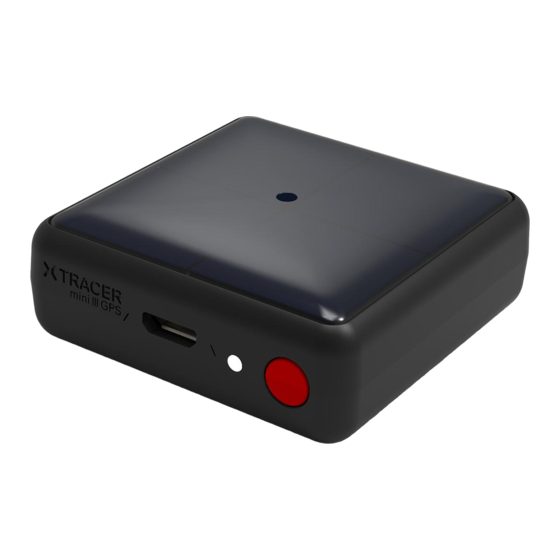
Table of Contents
Advertisement
Quick Links
Advertisement
Table of Contents

Summary of Contents for XC-Tracer Mini
- Page 1 User Manual XC Tracer Mini V1.0 User Manual XC Tracer Mini V1.0 Rev 01 25.2.2016...
- Page 2 Use the velcro to attach XC Tracer Mini to the shoulder strap of your harness, or to your cockpit, or (NB.
- Page 3 (this feature is described further below). Finally XC Tracer Mini makes a beep-beep-beeeeeep and it’s now ready for flight. Turning XC Tracer Mini off is just the same - press and hold the red button until you hear beep- beep.
- Page 4 Should it ever be necessary you can charge XC Tracer Mini using a Micro USB cable. It takes approximately 8 hours to fully charge the battery so it's best to leave it charging overnight.
- Page 5 # create your own vario tone settings below beepOnlyWhenFlying=yes When this is set XC Tracer Mini will be silent before takeoff. This is very helpful when you have configured some kind of a thermal sniffer. With beepOnlyWhenFlying=yes the variometer will be silent until XC Tracer Mini detects a climb/sink rate of +/- 0.75m/s for roughly 2-3 seconds.
- Page 6 XC Tracer Mini doesn't actually save the new configuration into its internal memory until it starts up in normal flight mode. So, press the red button briefly to unmount / eject the device from your computer, disconnect it from the USB cable, then turn XC Tracer Mini on as normal.
- Page 7 Connect XC Tracer Mini to a computer using a Micro USB Cable and once connected, switch the device on by briefly pressing the red button until you hear a beep-beep-beep. XC Tracer Mini is now running in USB-MSD (Mass Storage Device) mode. XC Tracer Mini’s internal Micro SD Card will appear as an external drive in Windows Explorer or the Mac Finder.


Need help?
Do you have a question about the Mini and is the answer not in the manual?
Questions and answers